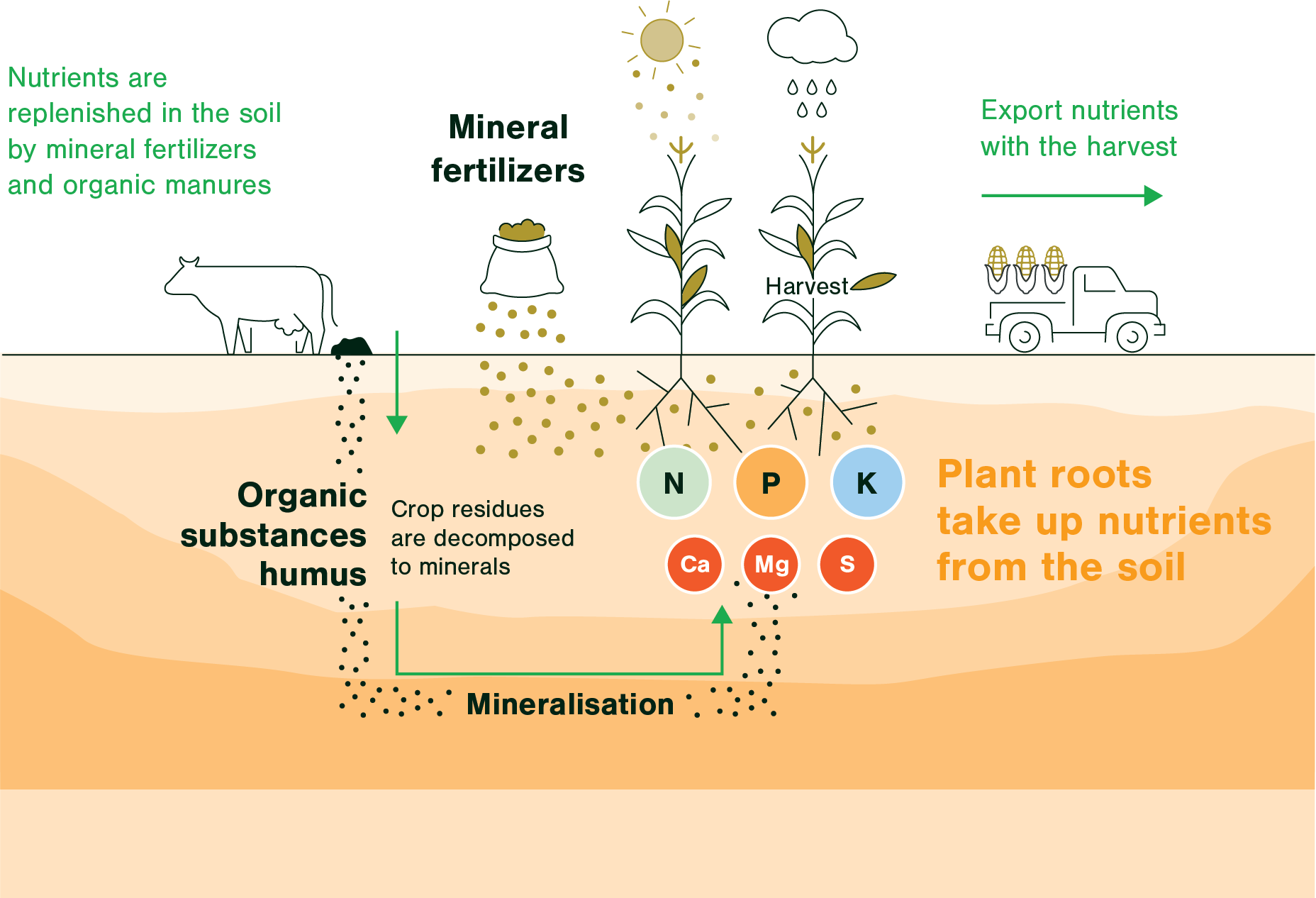ForumIAS announcing GS Foundation Program for UPSC CSE 2025-26 from 27th May. Click Here for more information.
Source- This post on Balanced fertilisation is based on the article “How the next government will push ‘balanced fertilisation” published in “Indian Express” on 1st May 2024.
Why in the News?
The promotion of Balanced fertilisation will be a crucial agricultural priority for the incoming government post Lok Sabha elections. Balanced fertilisation discourages farmers from applying excessive of fertilisers having only primary nutrients in high concentrations, such as urea, di-ammonium phosphate (DAP) or muriate of potash (MOP).
About Balanced fertilisation

1. About Balanced fertilization- Balanced fertilization refers to the process of supplying essential nutrients to crops in the right proportion. The nutrients are supplied taking into consideration the soil type and the specific requirements of the crop at different growth stages.
2. Essential Nutrients Supplied-
a. Primary nutrients which include nitrogen (N), phosphorus (P), and potassium (K)
b. Secondary nutrients which include Sulfur (S), calcium, and magnesium.
c. Micronutrients which include iron, zinc, copper, manganese, boron, and molybdenum.
Challenges related to Balanced fertilisation
1. Price Controls leading to lower prices of single nutrient rich fertlisers- Restoration of price controls on non-urea fertilizers like the Diammonium phosphate (DAP) has led to lowering of its prices as compared to other nutrient balanced complex fertilisers like 10:26:26:0 and 12:32:16:0 NPKS complex fertilisers.
2. Vague fixing of prices- The fertiliser prices are vaguely fixed without considering the market demand and supply. For ex- The Muriate of Potassium (MOP) price is not feasible either for the farmers for direct application in the field nor to the fertiliser firms to make complex fertiliser. Hence, it is not being used in the farms, leading to potassium deficiencies.
Steps which can be taken to promote Balanced fertilisation
1. Rationalization of DAP and MOP prices- The recent reduction in landed prices of imported urea, DAP, and MOP due to present geopolitical situation such as Russia’s invasion of Ukraine should be used by the government to rationalize MRPs of fertilizers domestically and promote balanced plant nutrition.
2. Bringing Urea under NBS Scheme- The government can leverage lower international prices to encourage balanced plant nutrition by potentially bringing urea under the Nutrient-Based Subsidy (NBS) scheme.
3. Crop-specific usage of fertiliser- The fertiliser usage must be restricted to particular crops. For ex- DAP usage should be restricted to rice and wheat.
4. Granular form of fertiliser- The fertilisers must be marketed in granular forms as it prevents adulteration and ensure slower release of nutrients. (SSP in granular form slows release of Phosphorous)
Scheme launched by the Govt to promote Balanced Fertilization
The Government launched the Nutrient Based Subsidy (NBS) Scheme to promote balanced fertilization in the country.
1. About NBS: The nutrient-based subsidy (NBS) system was instituted in April 2010 to promote balanced fertilization.
2. Provision: Under it, the government fixed a per-kg subsidy for N, P, K and S.
3. Aim of the NBS: This system aimed to encourage product innovation and steer farmers towards using complex fertilizers that contain a balanced mix of nitrogen (N), phosphorus (P), potassium (K), sulfur (S), and other nutrients in appropriate proportions.
4. Impact of NBS: Between 2009-10 and 2011-12, there was a decline in the consumption of DAP and MOP fertilizers, while there was an increase in the usage of NPKS complexes and single super phosphate (SSP).
5. Reason for failure: The Nutrient-Based Subsidy (NBS) scheme failed due to its exclusion of urea. Despite the introduction of NBS, urea consumption continued to rise steadily as its maximum retail price remained controlled with only marginal increase.
UPSC Syllabus: Indian economy (Agriculture)




